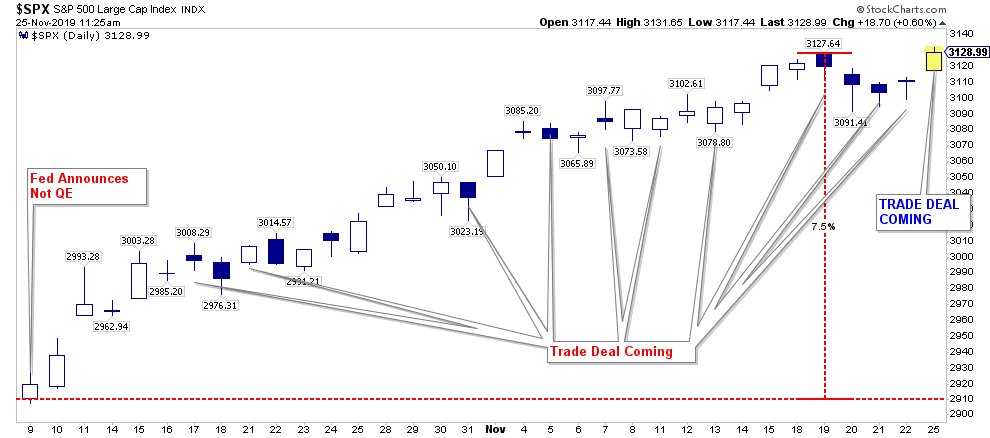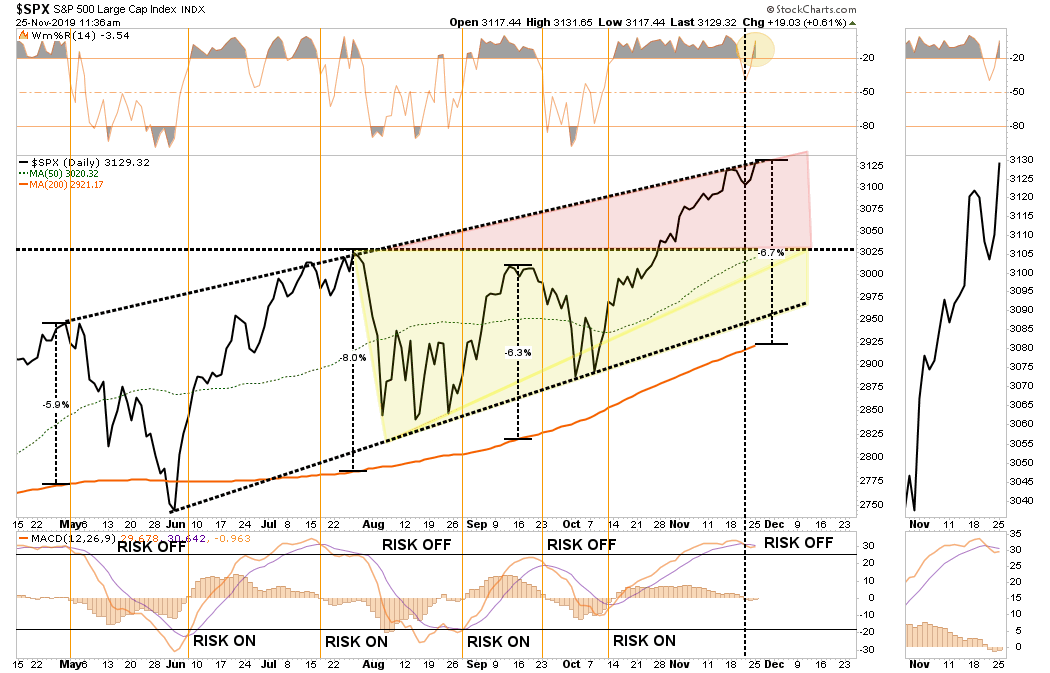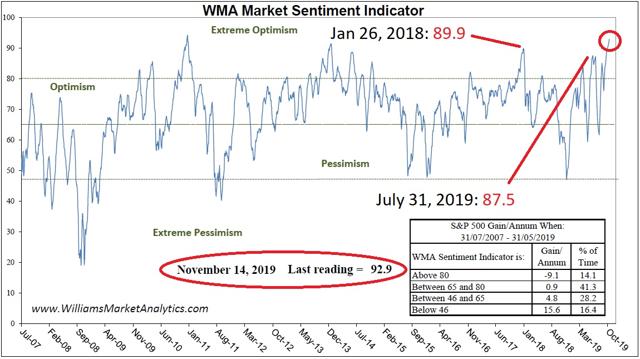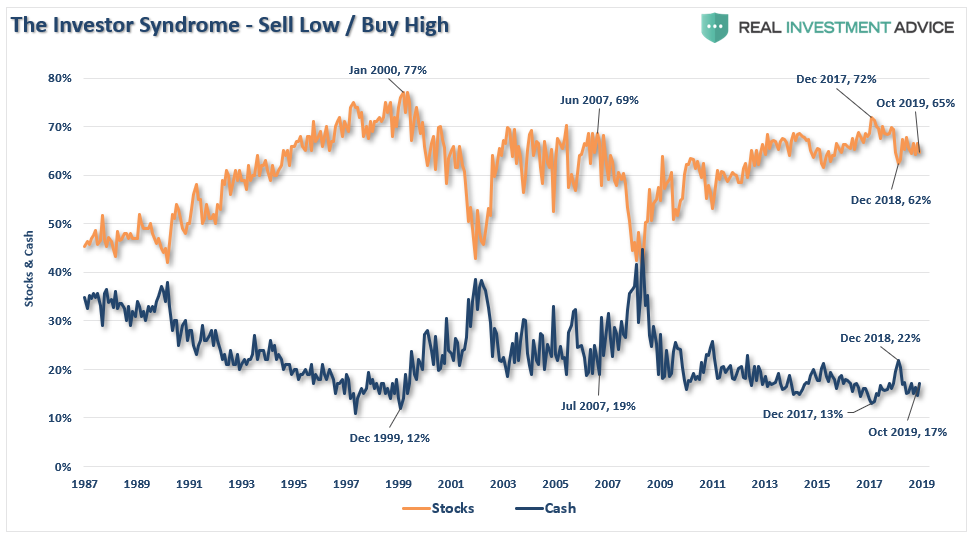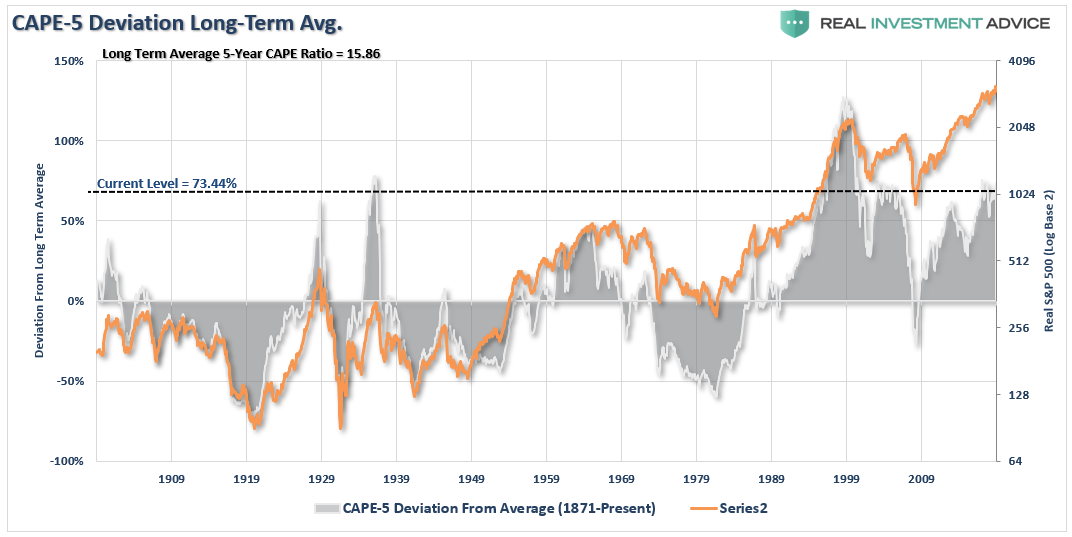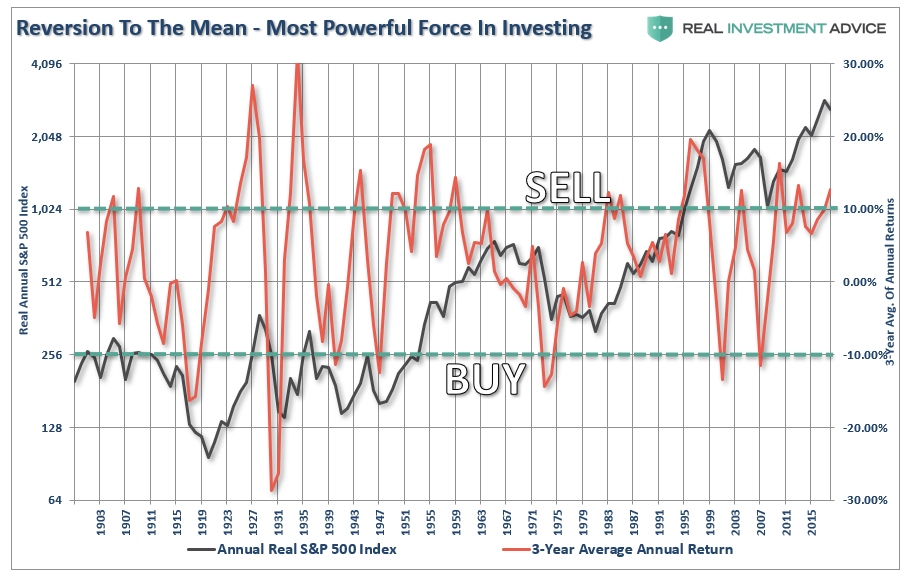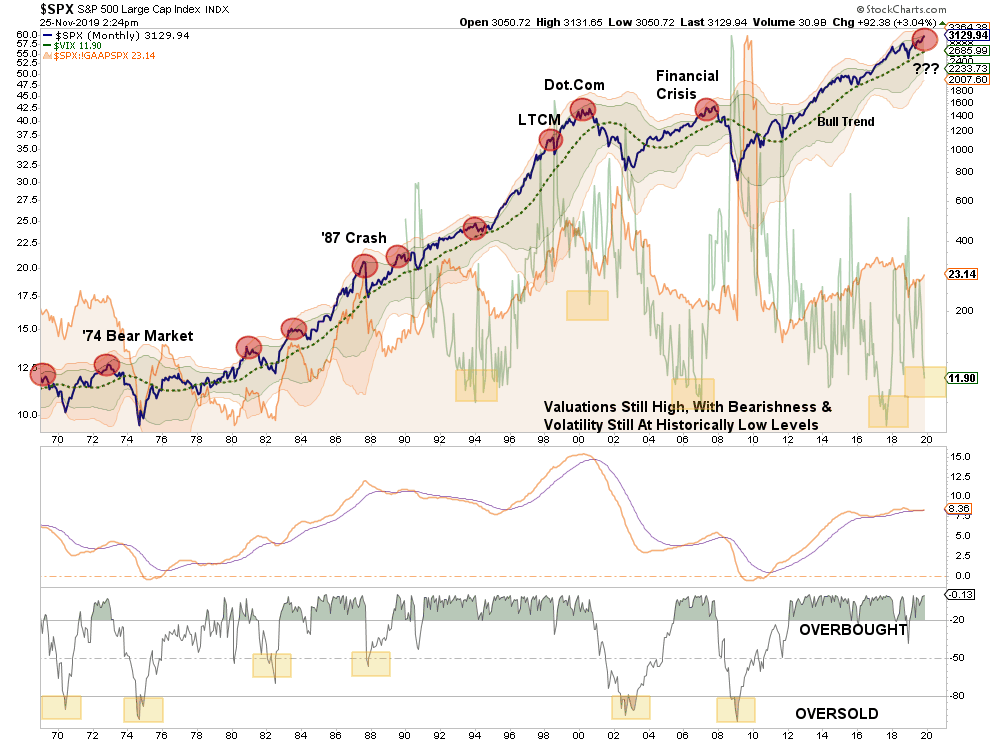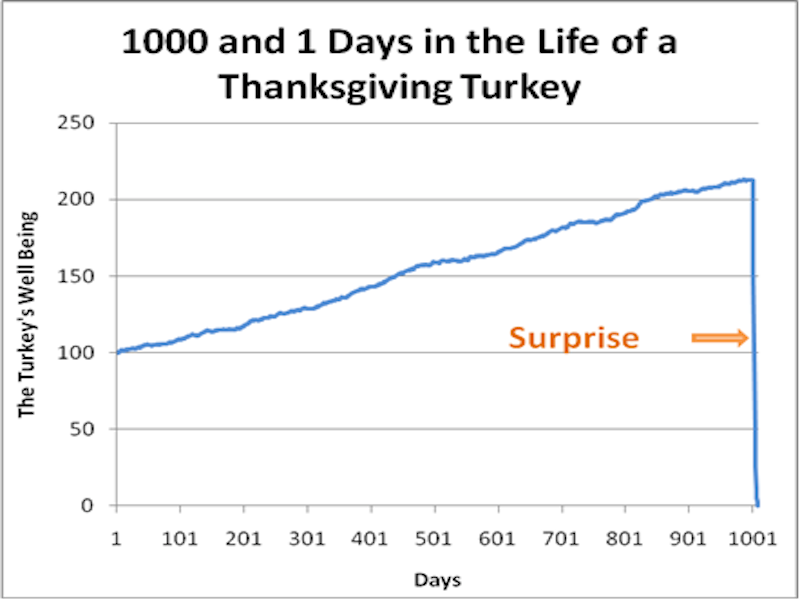by Lance Roberts, Clarity Financial
On Monday, the markets jumped on more “trade news,” despite there being no real progress made. However, such wasn’t surprising as we discussed in this past weekend’s newsletter:
“Over the last few weeks, we have been discussing the ‘QE, Not QE’ rally. Regardless of what the Fed wishes to call their bond purchases, the market has interpreted the expansion of their balance sheet as a ‘QE’ program. Given that investors have been ‘trained’ by the Fed’s ‘ringing of the bell,’ the subsequent 6-week advance was not surprising.
(I might have missed a couple of ‘trade deal’ headlines but you get the drift.)”
If you aren’t subscribed, you are missing out.
However, this “trade deal” rally was also something we suspected would happen.
“With QE-4 in play, the bias remains to the upside keeping our target of 3300 on the S&P 500 in place. This is particularly the case as we head further into the seasonally strong period combined with an election year cycle.
As shown in the chart below, the breakout to all-time highs was substantial, and regardless of your bias, this was a “bullish” advance and suggests higher prices in the short-term.”
“The correction this past week is likely not yet complete. Our short-term trading indicators are NOT oversold, but it is worth noting they are not as overbought as they were. This suggests the market could certainly muster a post-Thanksgiving rally.
Looking ahead, a subsequent pre-Christmas correction remains likely, particularly as the market drifts between one “trade deal” tweet, to the next.
For now, we continue to maintain our hedges as all of our indicators are still suggestive of a short-term reversal.”
Yea…I know…“Don’t Fight The Fed.”
I don’t disagree, and our portfolios remain primarily long exposed despite the short-term hedge we added to reduce the risk of a short-term “reversion.”
Risk Of Correction Remains
In a market that is excessively bullish, and overly complacent, investors are “willfully blind” to the relevant “risks” of excessive equity exposure. The level of bullishness, by many measures, is extremely optimistic.
Not surprisingly, that extreme level of bullishness has led to some of the lowest levels of volatility and cash allocations in market history.
Of course, these actions must have a supporting narrative.
Stocks To Be Propelled Higher In 2020: U.S. equity strategist, David Kostin said:
“We expect the current bull market in US equities will continue in 2020. The durable profit cycle and continued economic expansion will lift the S&P 500 index by 5% to 3250 in early 2020.”
The Great Rotation: JP Morgan analyst Nikolaos Panigirtzoglou said:
“Given this year proved to be a strong year for equity markets, helped by institutional investors, then we should see retail investors responding to this year’s equity market strength by turning [into] big buyers of equity funds in 2020. This suggests 2020 could be another strong year for equities driven by retail rather than institutional investors.”
This is an interesting turn of sentiment considering that just a month ago headlines were plastered with “recession” fears.
Despite the “narrative,” and the “prima facie” evidence you shouldn’t “Fight The Fed,” the current detachment of prices from valuations, and the deviation of price from long-term norms, are concerning.
CAPE-5 is a modified version of Dr. Robert Shiller’s smoothed 10-year average. By using a 5-year average of CAPE (Cyclically Adjusted Price Earnings) ratio, it becomes more sensitive to market movements. Historically, deviations above +40% have preceded secular bear markets, while deviations exceeding (-40%) preceded secular bull markets.
Also, as I noted in Monday’s missive on “Investing vs Speculation:”
“Regression to the mean is the most powerful law in financial physics: Periods of above-average performance are inevitably followed by below-average returns, and bad times inevitably set the stage for surprisingly good performance.” – Jason Zweig
The chart below is the 3-year average of annual inflation-adjusted returns of the S&P 500 going back to 1900. The power of regression is clearly seen. Historically, when returns have exceeded 10% it was not long before returns fell to 10% below the long-term mean which devastated much of investor’s capital.
Not surprisingly, when the price of the index has deviated significantly from the underlying long-term moving averages, corrections and bear markets have not been too distant.
Combining the above measures (volatility, valuation, and deviation) together shows this a bit more clearly. The chart shows both 2 and 3-standard deviations above the 6-year moving average. The red circles denote periods where valuations, complacency, and 3-standard deviation moves have converged.
While the media continues to suggest the markets are free from risk, and investors should go ahead and “stick-their-necks-out,” history shows that periods of low volatility, high valuations, and deviations from long-term means has resulted in very poor outcomes.
Lastly, there has been a lot of talk about how markets have entered into a new “secular bull market” period. As I discussed in “Which Secular Bull Market Is It,” I am not sure such is the case. Given the debt, demographic and deflationary backdrop, combined with the massive monetary interventions of global Central Banks, it is entirely conceivable this is more like the 1920-29 advance that led up to the “Great Depression.”
Regardless, whenever the RSI (relative strength index) on a 3-year basis has risen above 70, it has usually marked the end of the current advance. Currently, at 75, there is little doubt the market has gotten ahead of itself.
No matter how you look at it, the risk to forward returns greatly outweighs the reward presently available.
Revision Of Belief
Importantly, this doesn’t mean that you should “sell everything” and go hide in cash, but it does mean that being aggressively exposed to the financial markets is likely not wise.
It reminds me much of what Nassim Taleb once penned in his 2007 book “The Black Swan.”
“Consider a turkey that is fed every day. Every single feeding will firm up the bird’s belief that it is the general rule of life to be fed every day by friendly members of the human race ‘looking out for its best interests,’ as a politician would say.
On the afternoon of the Wednesday before Thanksgiving, something unexpected will happen to the turkey.
It will incur a revision of belief.”
Such is the market we live in currently.
It has become a “Turkey” market. Unfortunately, like Turkeys, we really have no clue where we are on the current calendar. We only know that today is much like yesterday, and the “bliss” of calm and stable markets have lulled us into extreme complacency.
You can try and fool yourself that weak earnings growth, low interest rates, and high-valuations are somehow are justified. The reality is, like Turkeys, we will ultimately be sadly mistaken and learn a costly lesson.
“Price is what you pay, Value is what you get.” – Warren Buffett
Copyright © Clarity Financial






